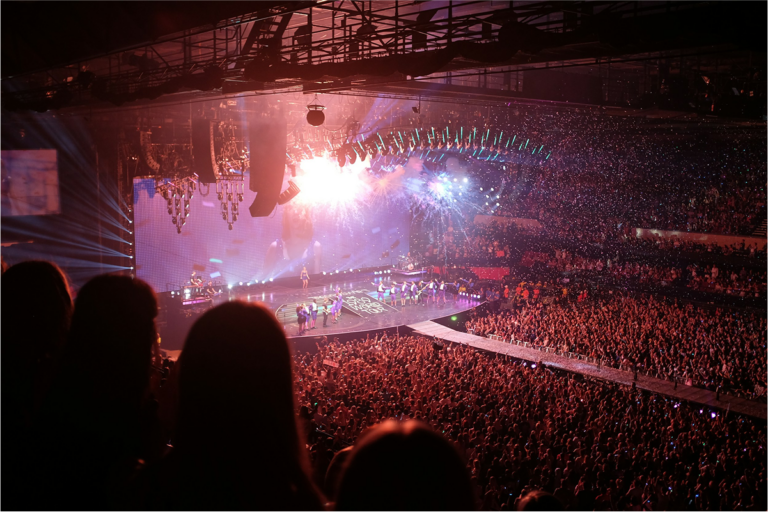
Technology companies are forever striving for universal recognition. Having their products used by as many people as possible is not only the truest validation of their work, but also their most effective means of advertising.
The very nature of a market economy, alas, puts pay to the domination they long for. Even the most successful enterprises are continually jostling for position with a number of rivals, revenue machines engaged in a neverending nip-and-tuck contest.
They would all crave the ubiquity of Bluetooth. You would be hard-pressed to find an individual anywhere who has engaged with electronic devices and not utilised Bluetooth technology. It’s an instantly recognisable name for a massive chunk of the world’s population.
Not an entity in its own right, Bluetooth is a standard for short-range wireless communication. That standard, detailed in a document some 3,000 pages long, is managed by the Bluetooth Special Interest Group (SIG), a non-profit that acts as Bluetooth’s guardian. Liberated from market forces, the SIG works proactively with member companies to explore and develop innovative ways to license the technology we all take for granted.
Connectivity is sharply on the rise in our homes, offices and cities, and the Bluetooth SIG is reacting positively to the challenge. Radio communication isn’t restricted to the device-to-device communication consumers are accustomed too; Bluetooth technology is now being adopted on a larger scale, as Martin Woolley outlines.
“The original Bluetooth is a cable replacement technology that means you can communicate between two devices. Bluetooth Low Energy (LE) then lets you do that, but it can also broadcast. Then there is Bluetooth mesh networking, which is about any-to-any communication, meaning that any device can talk to any other device in a network.”

It is with mesh networking where Bluetooth has seen perhaps its biggest step forward. In fact, the SIG itself describes the addition of mesh networking in 2017 as a ‘paradigm shift’ with it introducing Bluetooth technology to a host of new sectors, particularly in the ‘smart’ and Internet of Things (IoT) markets.
As Woolley, who is Developer Relations Manager EMEA for the SIG, explains, mesh networking is a topology enabling the creation of large-scale networks that could conceivably contain thousands of devices.
“Bluetooth mesh can handle up to 32,767 things, or nodes, in its network,” he continues. “But communication between devices is not limited to those devices that are in direct radio range, which is normally the issue with radio communications.
“Devices send messages to communicate, and messages bounce across the network from device to device – it’s called relaying – until they reach their destination. A mesh is like a spider’s web that can cover very large areas; entire airports, office blocks, collections of buildings.
“The number of hops you can do across the network is 127, and Bluetooth LE, which powers the communication beneath Bluetooth mesh, has a range of hundreds of metres. If you do 127 x 50-100 metres, you have quite a lot of range and you can cover large areas. That’s what ‘large-scale’ means in the context of Bluetooth mesh.”
A mesh is like a spider’s web that can cover very large areas; entire airports, office blocks, collections of buildings
By lifting the hood on this ‘managed flooding’ approach to message communication, a simple yet clever system is revealed. Devices are first provisioned onto the network using a series of security keys, a process undertaken via an application on smartphone or tablet.
To communicate across the mesh network, a group address sends a message – an act known as ‘publishing’ – to select nodes, which then process, or ‘subscribe’, that message. In almost every example, it’s about one node talking to a collection of other nodes on a publish and subscribe basis. Messages reach their destination via multiple paths on the mesh, creating an extremely reliable communication mechanism.
Initial use cases for Bluetooth’s mesh networks have seen them utilised to deliver automated systems in smart buildings, such as temperature or lighting control. It has also been deployed as a catalyst for wireless sensor networks, venturing here into the manufacturing sector. It is the lighting example that Woolley uses to demonstrate how mesh networking works on the ground.
“Imagine you’ve got a dozen lights in a meeting room,” he explains. “You do some configuration, where you say to the lights as you install them, ‘By the way, I want you to subscribe to ‘meeting room A lights’’. That’s the name of the group address. You’re telling these devices to pay attention to any message that’s addressed to ‘meeting room A lights’. They pay attention and if they see a message sent, they will respond.
“The light switches in the room, or the dimmers, are also Bluetooth mesh nodes. You configure them to publish their messages to ‘meeting room A lights’, the same group address. If you then twist the dimmer switch or press the button, it’s going to transmit a message address to ‘meeting room A lights’. The lights in that room have been told to pay attention to messages addressed to that group, so they will respond.
“The important point here is that while we have this concept of groups, the groups are not defined in terms of their membership. The light switch doesn’t know which lights are members of that group. The lights themselves don’t know what switches are controlling them. This is very advantageous because it means you can make changes and you don’t have to reconfigure tables of information or all the switches. That’s publish and subscribe.”
Bluetooth mesh networking has proven itself as a facilitator for wireless communication in the smart space. Work is continually being done to boost its presence in this area with, for instance, a group of high-profile companies including Alibaba recently joining forces with the SIG to advance the technology in the smart home market.
The next challenge is to bring large-scale networking to industry, with specific potential in industrial IoT and advanced manufacturing. Other benefits to the specification – including its multihop delivery mechanism to hugely expand coverage and its universal functionality – leave it ideally placed to make its mark.
“We haven’t really pushed hard in terms of bringing Bluetooth mesh into industry yet, but we’ve done work in talking to some of the household names that make equipment and systems for industry. You can guess the types of companies we’re talking about,” adds Woolley. “I’ve had face-to-face meetings with a number of these manufacturers and they see two areas of potential.
“One, of course, is to do with operational efficiency and cost reduction through greater automation. Automation is dependent on communication between machines, end of story. The other one is mass personalisation. The connected, automated systems that you can bring to bear on the production process actually allow you to personalise products on an individual basis for customers in a way that you could never do before.
“It’s not an area where we’ve been focusing on as a priority yet but I think that will come. When it does happen, it has the potential to be a really substantial area for Bluetooth.”
The unique framework of the Bluetooth SIG makes it ripe for innovation. With no commercial imperative, it is able to work freely in collaboration with technology leaders. Over 35,000 companies are members of the SIG, a large proportion of which rely on Bluetooth technology at the core of their business.
“By becoming members, they become part of the community,” Woolley states. “They have access to information earlier than would normally be the case, and if they’re the right sort of member they can get involved at a tangible level by becoming part of our working groups. Most of what we do comes from the membership saying: ‘we should do this’.”
Representatives from its membership even reach as high as the SIG’s board of directors, with high-profile organisations bringing sector expertise to the decision-making process. Any fresh innovations for Bluetooth technology are proposed before passing through working and study groups. The final hurdle is meeting the stringent technical specifications.
“The thinking when Bluetooth was first conceived was that it should be governed by technical standards and quality assurance procedures,” expands Woolley. “So instead of two manufacturers having a big share in a tiny market, we make it as a standard to all manufacturers. You then have the potential of an enormous market with a larger number of competitors getting a share of it. That’s what’s been achieved.”
There’s little doubt that the Bluetooth name remains as relevant as ever. Over 10 million Bluetooth-enabled devices are shipped every day, compared to the 800,000 that were made in its first year of existence at the turn of the century.
On top of its defining work on mesh networking, the SIG is also making strides, with the help of its membership, in the location services segment. What does Woolley view as the secret to Bluetooth’s longevity?
“One of the reasons Bluetooth has succeeded in the way that it has, and the reason why it will still be around in five years time, is because it doesn’t stand still, it’s never stagnant,” he concludes.
“It’s been growing and growing and part of that is because developers love it, we keep evolving and we do our best to make sure developers are supported and well informed about new things.”


